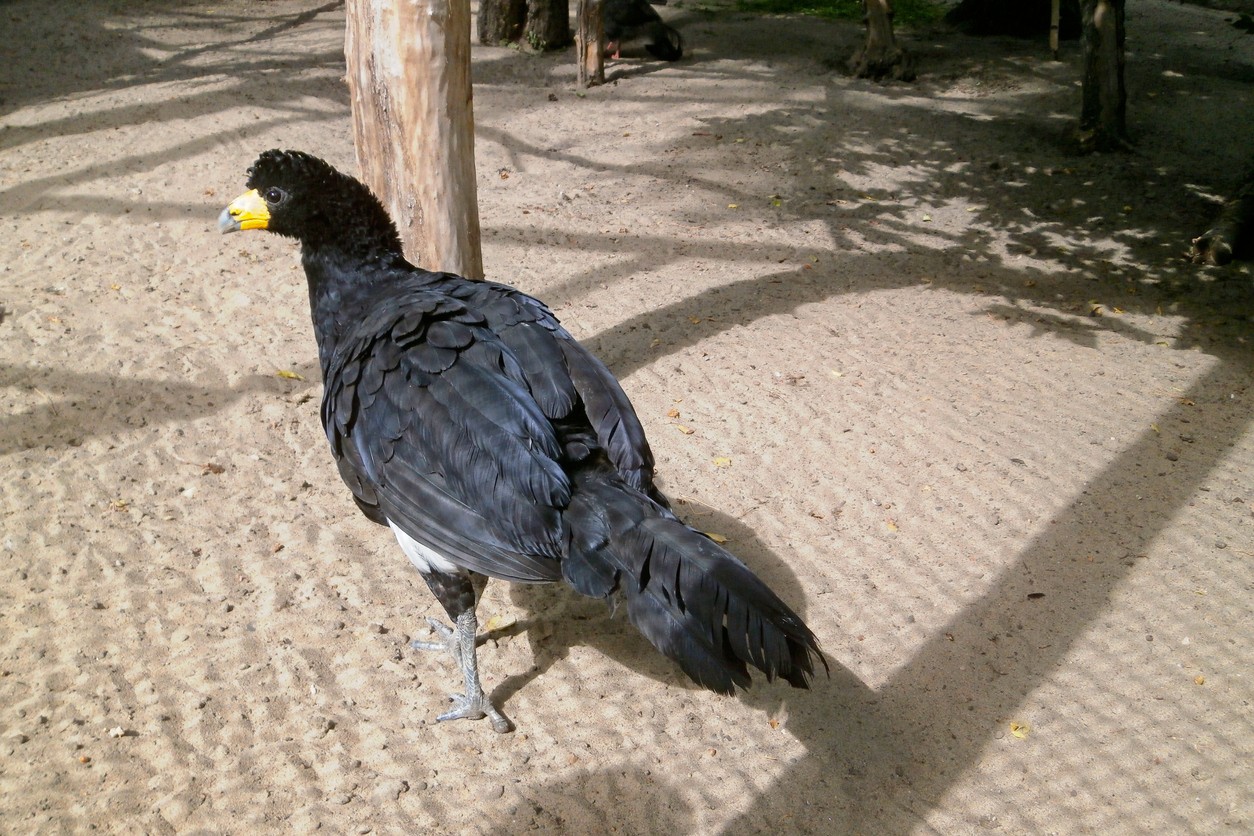Black Curassow
A species of Curassows Scientific name : Crax alector Genus : Curassows
Black Curassow, A species of Curassows
Botanical name: Crax alector
Genus: Curassows
Content
Description General Info

Description
The black curassow is a large bird reaching about 900 millimetres (35 in) in length. The male has black upper parts glossed with a purplish sheen and an inconspicuous black crest. The skin at the base of the grey beak is yellow or orange but there are no knobs and wattles. The underparts are white. The female is similar but the crest is barred with white, and the juvenile is black, barred and mottled with reddish-brown and reddish-buff. 
Size
95 cm
Life Expectancy
24 years
Nest Placement
Tree
Feeding Habits
Black Curassow consumes a varied diet including fruits, leaves, buds, and shoots. They also eat invertebrates and smaller vertebrates. Their foraging habit involves ground feeding and they exhibit a preference for certain fruits, indicating a unique adaptation in their diet.
Habitat
The black Curassow's habitat includes humid terra firme and gallery forests, often near rivers and forest edges. Adaptable, they also dwell in clearings, alongside roads, old plantations, and in secondary growths, particularly Vismia-dominated areas. They favor well-drained, hilly inland terrains, sometimes up to elevations of 1700 meters. Seasonal variations lead them to nest in várzea and riparian forests, while foraging in vine and bamboo-rich slope forests.
Dite type
Omnivorous
General Info
Feeding Habits
Bird food type
Behavior
The black curassow is a largely ground-dwelling bird. It lives in the undergrowth in lowland forests and plantations and in riverside thickets. It mostly eats fruit, but also consumes buds, shoots, leaves, flowers, fungi and invertebrates. It nests a few meters above the ground in trees, the nest being a platform of sticks. Breeding takes place in the rainy season in Suriname while in French Guiana, young are reported in March and September. 
Species Status
Although the black curassow is fairly common, populations have been declining because of habitat loss, trapping and hunting. These threats are likely to continue, and the International Union for Conservation of Nature rates the bird's conservation status as "vulnerable". 

